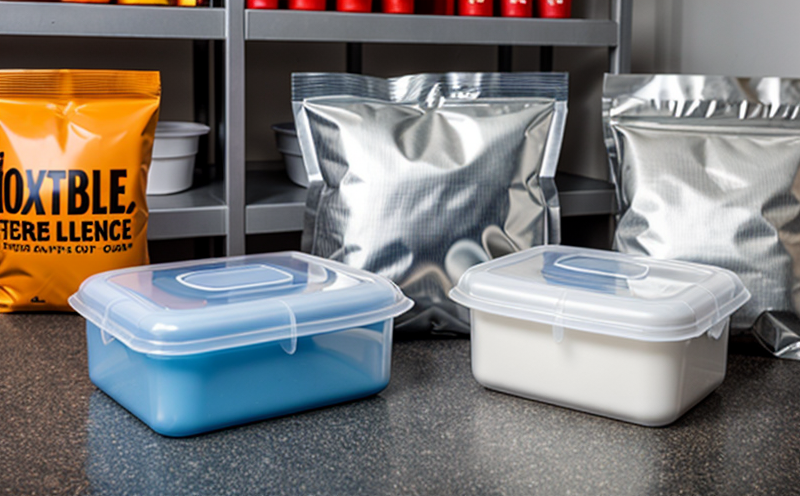ASTM D882-16 Tensile Testing for Packaging Films
The ASTM D882-16 test method is a critical procedure used in quality assurance and regulatory compliance for packaging films. This standard specifies the procedures for performing tensile testing on plastic web materials, including those commonly used in flexible packaging applications. The primary purpose of this testing is to determine the ultimate tensile strength (UTS), elongation at break, and other mechanical properties that are essential for ensuring product integrity and performance.
The ASTM D882-16 test involves subjecting a sample cut from the web material to controlled stretching until it breaks. The specimen is typically prepared by cutting a strip of uniform width and length, which is clamped into the grips of a tensile testing machine. The machine then stretches the specimen at a specified rate, recording the force required to stretch the material and the corresponding elongation.
The results from this test provide vital information about the mechanical properties of packaging films. For instance, higher UTS values indicate greater resistance to tearing or puncturing under stress, which is crucial for maintaining the integrity of packaged goods during transportation and handling. Similarly, higher elongations at break suggest that the material can withstand more stretching before failure, reducing the risk of premature damage.
The ASTM D882-16 test is not only beneficial for quality control but also plays a key role in ensuring compliance with international standards such as ISO 5893 and EN 1047. Compliance with these standards can significantly enhance a company's reputation, facilitate market access to foreign markets, and ensure product safety.
For flexible packaging films, the ASTM D882-16 test is particularly important because it helps in optimizing material selection and design for various applications such as food packaging, pharmaceuticals, and consumer goods. By accurately determining the tensile properties of the materials used, manufacturers can tailor their products to meet specific performance requirements while minimizing waste and resource consumption.
Moreover, this test contributes to the overall sustainability efforts by helping identify more sustainable material options that still meet the necessary mechanical property standards. This ensures that packaging remains effective in protecting products while reducing its environmental impact through more efficient use of resources.
Benefits
- Ensures product integrity and performance during transportation and handling.
- Promotes compliance with international standards like ISO 5893 and EN 1047.
- Aids in optimizing material selection for various applications such as food packaging, pharmaceuticals, and consumer goods.
- Facilitates the identification of more sustainable material options that still meet necessary mechanical property standards.
Industry Applications
| Application Area | Description |
|---|---|
| Flexible Food Packaging | Tensile testing is used to ensure that the packaging can withstand the stresses encountered during filling, sealing, and transportation. |
| Pharmaceutical Packaging | The test helps in ensuring that the packaging material is robust enough to protect the product from external factors such as moisture and light. |
| Consumer Goods Packaging | This application ensures that consumer goods are packaged securely, preventing damage during storage and distribution. |
| Application Area | Description |
|---|---|
| Pet Food Packaging | The test is used to ensure that the packaging can withstand the rigors of production and transportation, maintaining the integrity of the product. |
| Pharmaceutical Blister Packs | This ensures that blister packs are robust enough to protect pharmaceuticals from external factors while being easy to open for the consumer. |





